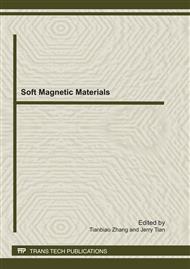p.1
p.7
p.13
p.20
p.23
p.29
p.35
p.40
Temperature Compensation of RLG’s Bias Based on LS-SVM
Abstract:
. Bias of ring laser gyro (RLG) changes with temperature in the non-linear way, which is an important restraining factor for improving the accuracy of RLG. For the deficiency of least squares regression and neural networks, a new method of temperature compensation of RLG’s bias was proposed, that is, building function regression model by using Least Squares-Support Vector Machine(LS-SVM). Static and dynamic temperature experiments of RLG’s bias are carried out. The results show that: after static temperature compensation, the maximum error of RLG’s bias has dropped from 0.0413º/hr to 0.00073º/hr; while after dynamic temperature compensation, the gyro precision has increased from = 0.0102º/hr to = 0.0011º/hr. It indicates that this method has improved the laser gyro’s accuracy considerably.
Info:
Periodical:
Pages:
1-6
Citation:
Online since:
July 2011
Authors:
Price:
Сopyright:
© 2011 Trans Tech Publications Ltd. All Rights Reserved
Share:
Citation:


